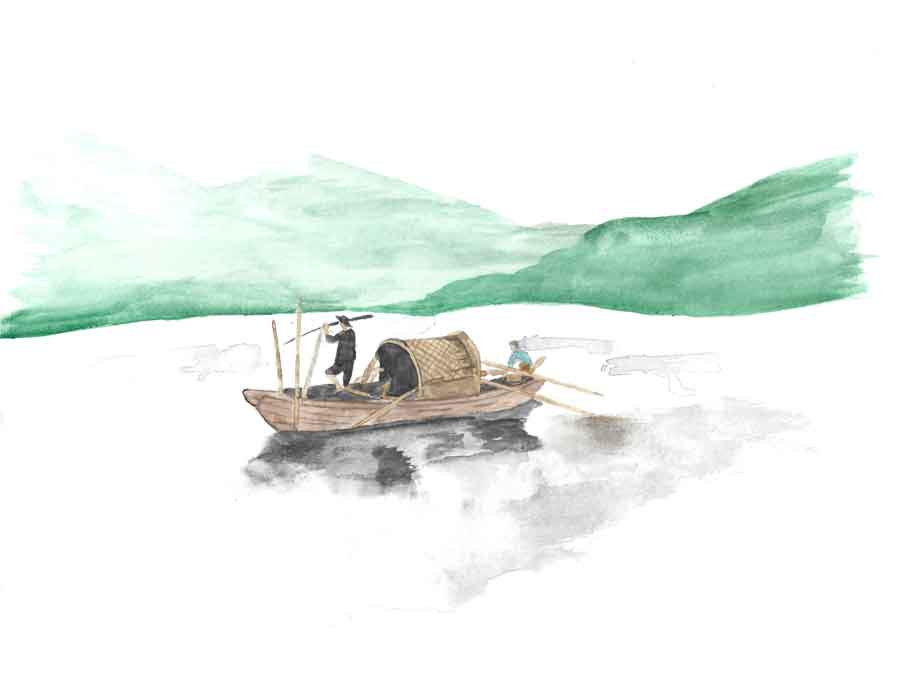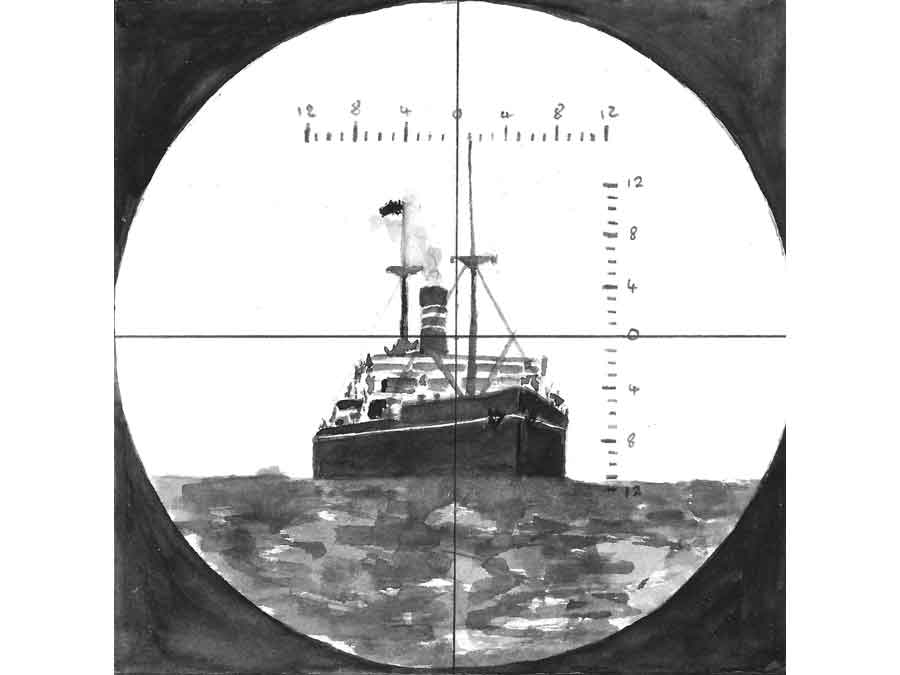The Sinking of the Lisbon Maru
Resulting in an huge loss of life, which could have been prevented
Out of the 1,816 prisoners who boarded the Lisbon Maru, 828 died on the journey, went down with the ship, drowned in the sea, or were killed in the massacre afterwards.
For the remaining 988 survivors, rescue and recapture was not going to be anything that they would be thankful for.
On Board the Lisbon Maru
It was 7.04 am on the 1st of October 1942, when Lieutenant Commander Rob Roy McGregor, commander of the USS Grouper gave the order to torpedo the Lisbon Maru.
Had he known who was on the ship, he probably would not have given the order to fire.
The Lisbon Maru had set sail from Hong Kong at daybreak on the 27th September and on board were:
Royal Navy
311
Royal Marines
22
Royal Naval Dockyard Police
10
Hong Kong Royal Naval Volunteer Reserve
23
Royal Regiment of Artillery
376
Corps of Royal Engineers
171
Royal Corps of Signals
(Hong Kong Signal Company)
129
2nd Battalion The Royal Scots
(The Royal Regiment)
373
1st Battalion The Middlesex Regiment
(Duke of Cambridge's Own)
358
Royal Army Service Corps
1
Royal Army Medical Corps
21
Army Dental Corps
3
St. John Ambulance
1
Hong Kong Dockyard Defence Corps
8
Merchant Navy
1
Hong Kong Police Force
5
Civilians
3
Also on board were the ship's captain, Kiyoda Shigeru, an army interpreter in charge of the British prisoners, Lieutenant Hideo Wada, 778 Japanese soldiers, who were either wounded or returning home to Japan and 25 Japanese soldiers to guard the POWs.
The prisoners' health was already poor, because of the meagre rations they had been on for months. This meant that most were suffering from malnutrition, exhaustion, and disease as they boarded the Lisbon Maru.
On board the prisoners were housed in 3 holds, where platforms, made out of roughly hewn timber had been erected. The conditions were appalling with poor ventilation, almost zero sanitation and extremely cramped.
No 1 Hold
Nearest the bows
Commanded by Lieutenant J.T. Pollock
Royal Navy
Over capacity so some transferred to No 2 Hold
No 2 Hold
Just in front of the bridge
Commanded by Lieutenant Colonel H.W.M. (Monkey) Stewart
Senior British officer on board
1st Battalion Middlesex Regiment
2nd Battalion Royal Scots
A number of smaller units
No 3 Hold
Abaft of the bridge towards the stern
Commanded by Major Pitt
Royal Artillery
Over capacity so some transferred to No 2 Hold
The Darkest Hours of the Lisbon Maru
On route, Captain Shigeru chose to keep as close to the coastline as possible, knowing that American Navy submarines were in the area, with orders to sink any Japanese commercial shipping. One such submarine was the USS Grouper, whose patrol position was around 100 miles east of Shanghai.
1st October 1942
0400
USS Grouper identified a target freighter heading north. The freighter was the Lisbon Maru. As the moonlight was so bright, Lieutenant Commander Rob Roy McGregor, chose to plot the freighter's course, submerge and lie in wait instead.
0704
3 torpedoes were fired at the closest range attainable, but missed.
0706
A 4th torpedo was fired, which hit the Lisbon Maru's fuel tanks. The Japanese soldiers on board the Lisbon Maru started firing at USS Grouper and raised a flag requesting not to be fired upon.
0845
A 5th torpedo was fired, but did no further damage. A 6th torpedo was prepared, but the Lisbon Maru listed, so the USS Grouper repositioned.
0937
A 6th torpedo was fired at the stern of the Lisbon Maru and scored a direct hit. At this point a Japanese light bomber arrived on the scene and the USS Grouper had to dive immediately.
Meanwhile, the prisoners aboard the Lisbon Maru could hear the gunfire, the ship shaking and coming to a stop, but they had no idea what was going on. Those that had been up on deck were forced back into the holds. The prisoners received no food or water and the power to the holds was cut off, so there was no light.
No 3 Hold was flooding and although the prisoners were doing their best to pump it out, the stern of the ship was getting lower and lower.
By 1700
The 778 Japanese soldiers began to transfer to a destroyer, thought to be the Kuri and another freighter, the Toyokuni Maru, leaving only the 25 guards and crew on board with the prisoners.
The hatches were closed and secured with battens to prevent problems from the prisoners and the Japanese decided to try and tow the Lisbon Maru to shallower waters.
2nd October 1942
Daybreak
The Lisbon Maru began to sway violently from side to side and it was becoming apparent that the Lisbon Maru was not going to make it to shallow waters. Conditions in the holds had rapidly deteriorated, so Lieutenant Colonel Stewart decided it was time to try and break out.
0810
The remaining Japanese sent a signal asking permission to abandon ship, lifeboats were sent over and removed the crew and most of the guards.
0900
Lieutenant Howell and Lieutenant Potter managed to open their hatch, made their way on deck with four others and began moving towards the bridge. The remaining Japanese soldiers opened fire, killing Lieutenant Potter and wounding another.
The other prisoners went back to the hold, informing Lieutenant Colonel Stewart that the ship was now very low in the water.
Above deck, the remaining Japanese had been taken off, the towline was released. The British prisoners and the sinking ship were now on their own.
Lieutenant Colonel Stewart gave the order to abandon ship.
The stern of the Lisbon Maru was now underwater and a large amount of seawater was pouring into No 3 Hold, drowning all of those trapped inside.
The prisoners in No 1 Hold and No 2 Hold broke out and grabbed anything which would float. Only to be met by Japanese soldiers shooting at them, or using their small boats to run them down.
The next long hours
The nearest land was a group of small, rocky Chinese islands. As the wreckage and dead bodies began to wash up on the shores, the inhabitants raised the alarm and fishermen from Qingbang and Miaozihu set out in their tiny boats to see if they could help.
The fishermen made trip upon trip rescuing a number of the prisoners taking them back to their islands, feeding and clothing them. Their action also caused the Japanese to stop shooting and start to rescue the drowning prisoners.
384 prisoners were saved by these brave Chinese fishermen.

By 5th October 1942
Within a few days, the Japanese landed on the islands to round up the survivors. Most of the prisoners surrendered as they didn't want any harm to come to the fishermen and their families.
Three men, J.C. Fallace, W.C. Johnstone, and A.J.W. Evans did manage to escape. Helped by the fishermen, they hid in a cave, until they could be taken to mainland China, from where they escaped with the help of the Free Chinese.
By 5th October 1942, all the survivors were gathered on the docks at Shanghai. Some of the very sick prisoners were left behind, but most were taken onto Kobe and Osaka to work on the Japanese war effort. Many more would die, either from sickness or they were killed. The rest would remain in the POW camps until liberation and the end of the war.
